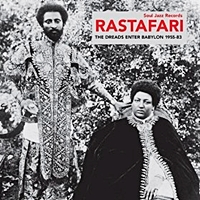

In Nepal and Nigeria, people used a base-12 number system, while in the Babylonian civilisation, people used a base-60 number system.

While most countries around the world today use base-10, some early human civilisations used other bases in their number systems. Therefore, is equivalent to 0.25, as shown below. How do we represent fractions such as 1/4 in decimal form? We can convert 1/4 into 25/100, which is equal to 2/10 + 5/100. Thus, the tenths place is to the right of the ones place, the hundredths place is to the right of the tenths place, and so on. Each digit still has a value of ten times the digit to the right of it. In base-10, we represent decimals by adding the decimal digits after a decimal point. Thus, it is meaningless to write 83 2, as neither 3 nor 8 are digits in base-2. Remember that in base-2, there are only two digits, 0 and 1. If no subscript is added at the end of the number, the number is base-10 by default. We can thus represent the above information as: Mathematicians represent the base of a number by adding the base in subscript at the end of the number. In a base-2 number system, each place is worth two times as much as the place to the right of it. As electrical flow can be started and stopped billions of times each second, the computer can calculate numbers very fast.Įarlier, we mentioned that in a base-10 number system, each place is worth ten times as much as the place to the right of it. 1 represents the presence of electrical flow whereas 0 represents the absence of electrical flow. They use a base-2 number system instead, with two different digits: 0 and 1. Therefore, in base-10, we have a ones place, tens place, hundreds place, and so on.Ĭhapter 2: Other ways of representing numbersĬomputers are unable to process base-10 numbers, as they operate based on electricity. Hence, 61 cannot be represented in this number system, and this would not be valid either.īecause we have ten symbols, each place in our number system is worth ten times as much as the place to the right of it. If A or B are 1 or higher, the result would be greater than 61. There are only 10 digits in our base-10 number system, from 0 to 9. If the places were 10000, 100, and 1, the following problem would result: I cannot represent the number 61 using this number system.Ī, B, and C must be digits of a three-digit number. Since I can use represent numbers using two different ways, this is not a valid base system. If the places were 20, 10, and 1, then I could represent the number 61 in two different ways: What determines the value of each place? Using our ten digits, why can’t the place values be 1, 10, 20 or 1, 100, 10000?Įarlier, we mentioned that our base-10 number system allows us to represent each number with a unique combination of symbols. Likewise, for the rest of the number, we can see that 314 = 3 × 100 + 1 × 10 + 4 = 300 + 10 + 4. As 3 is in the hundreds place, its value is: 3 × 100 = 300. Of course, 3 is in the hundreds place, 1 is in the tens place, and 4 is in the ones place.Įach digit is multiplied by its place value to give its value in the number. Take the number 314 for example:Īlthough 4 is bigger than 3, in the number 314, the number 3 has a greater value than the number 4.

The value of a digit is equal to the base multiplied by the value of its place. The Arabic number system is known as a base-10 number system, because there are ten different digits used. How is this possible? Let us start by examining how numbers are represented in our Arabic number system. Each number is represented by a unique combination of symbols, and each combination of symbols represents a unique number. These ten symbols are sufficient to represent any number in writing. There are ten symbols that are used to represent numbers: 0, 1, 2, 3, 4, 5, 6, 7, 8, and 9. In modern times, we use Arabic numerals to represent numbers. Chapter 1: How do we count and represent numbers?


 0 kommentar(er)
0 kommentar(er)
